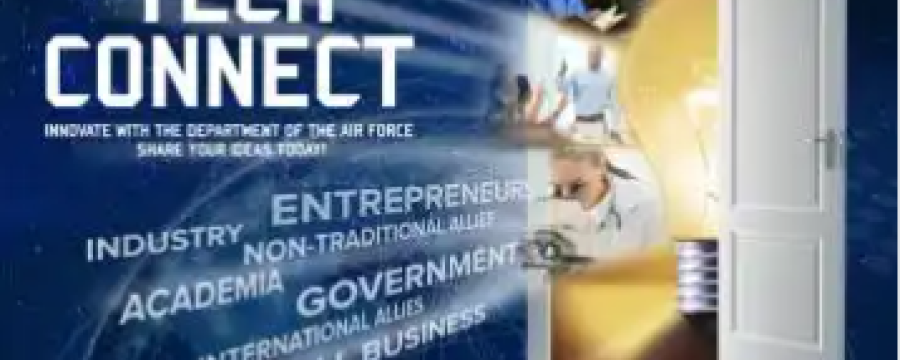New X-ray system seeks to streamline blast testing
Published
By Jeremy Dunn
WRIGHT-PATTERSON AIR FORCE BASE, OHIO (AFRL) — A new system for acquiring data from blast tests aims to replace the current method of going through blast debris by hand. Developed by a company called ZKxKZ in partnership with Air and Space Force Tech Connect, the automated system uses quantitative X-ray technology to reduce the time and expense of post-blast test inspection and data collection, which is currently done by hand.
The Air and Space Force Tech Connect program, through the Air Force Research Laboratory, or AFRL, seeks to help entities from industry, small business and academia gain access to relevant Air and Space Force subject matter experts and provide opportunities to develop new technologies pertinent to the U.S. military.
“We plan to use the system at our ordnance test range to characterize prototype warheads,” said Donald M. Littrell, principal research engineer at AFRL’s Munitions Directorate. “The data from the automated fragment scanner could potentially be integrated with our weapon modeling and simulation software to produce a seamless digitally engineered weapon development process.”
Prior to its current X-ray based blast-testing system, ZKxKZ proposed and won a Small Business Innovation Research grant to develop a modernized security, storage, and deployment vault for nuclear weapons to replace the existing infrastructure initially developed in the 80’s and 90’s.
“We strongly believe our technology will revolutionize how arena blast testing is currently conducted and wanted to spread the word,” said Adam Lanik, vice president of ZKxKZ. “We also received a lot of excitement when presenting to folks in the arena blast industry, but quickly realized it was somewhat fragmented and wanted to reach more folks.”
The current methodology for examining post blast test data involves people sifting through debris with a metal detector and tweezers, searching for metal fragments, some as small as a grain of sand. The fragments must then be individually extracted, cleaned and weighed.
This process is typically labor-intensive and time-consuming, depending on the test size and the number of personnel searching for the metal fragments. In addition to being a labor-intensive process, it is also subject to human error, with fragments possibly being missed or data being recorded incorrectly.
“It’s really about your technology meeting the needs of the Air Force,” said Littrell. “That’s what makes the Tech Connect services so vital – matching the contractor’s technology to the appropriate Air Force customer.”
According to Littrell, the automated fragment scanner will do three things: First, give the DOD more accurate fragment data by eliminating human error; second, eliminate the more labor intensive and tedious manual process of disassembling fiberwood bundles and collecting and recording the position and mass of thousands of fragments; and third, shorten the timeline between testing and data analysis from weeks to hours.
ZKxKZ’s X-ray system aims to obtain the needed information without having to manually locate or remove any of the individual fragments, reducing time and labor cost, in addition to finding more fragments and providing shape, size, material type and location information of those fragments.
“Our job is to innovate and to mature munition technologies from the concept ideation stage to proof-of-concept and application,” said Littrell. “[The Tech Connect team] made the introductions to the small business, facilitated a technical meeting with the contractor to discuss Air Force needs, and efficiently managed the contractual process.”
The next step for ZKxKZ is to begin finalizing the system design and initial trials, then move on to system field verification.
“It is great to have more connective tissue between the AF/SF and our company to ensure we are providing relevant technologies and to best understand how to help,” said Lanik. “I do remember thinking it would be a waste of time – and was happily wrong.”
About AFRL
The Air Force Research Laboratory, or AFRL, is the primary scientific research and development center for the Department of the Air Force. AFRL plays an integral role in leading the discovery, development and integration of affordable warfighting technologies for our air, space and cyberspace force. With a workforce of more than 11,500 across nine technology areas and 40 other operations across the globe, AFRL provides a diverse portfolio of science and technology ranging from fundamental to advanced research and technology development. For more information, visit www.afresearchlab.com.
About Air Force and Space Force Tech Connect
The Air Force and Space Force Tech Connect website provides access to current, open opportunities, meet-up events, other Department of the Air Force science and technology enterprise connectors and a way for anyone to share an idea. The Tech Connect team, comprised of AFRL personnel, connects quality, relevant ideas/technologies with Department of the Air Force subject matter experts. The team will review ideas/inquiries, provide feedback on innovative ideas and establish a dialogue with potentially interested Air Force and Space Force programs. For more information, visit: https://airforcetechconnect.org/.

